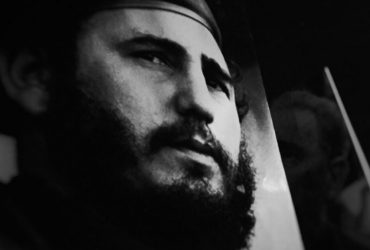Zohran Mamdani with Democratic Socialist flag. Composite image.
East Germany, 1993, shortly after the fall of communism. While West Germany was struggling financially to reunify with the East, I walked into my classroom and saw my adult students huddled around a desk, staring at a large book. I was teaching in a government retraining program, which existed because, after nearly forty years of communist rule, East Germans had no English ability, no computer skills, and little practical job experience.
On paper, many were technically trained, but they had never been given the proper tools or materials to work with. As a result, they were unemployable in the new, competitive market economy.
I asked what they were reading. The class leader smiled and said, “It’s a catalogue, teacher.” I was puzzled and asked what was so fascinating about a catalogue. He turned the book around to show me a page and said, “We never knew you could have a whole page of hammers.” In the former East German Democratic Republic, there had only been one hammer. It came in a plain brown box labeled “hammer.”
The same principle applied to everything. There was one coffee maker—it came in a brown box marked “coffee maker” and included two cups of coffee. Variety and personal choice played no role in communist production planning.
Even automobiles offered almost no diversity. East Germans could choose between two models: the Trabant and the Wartburg. The Trabant’s body wasn’t made of steel but of Duroplast, a plastic-like material pressed from recycled cotton waste and phenol resin, because East Germany couldn’t afford metal.
It had a two-cylinder, two-stroke engine that belched blue smoke and produced barely 26 horsepower. The car had no fuel gauge, no seat belts, no air conditioning, and in many cases, no working heater. Owners scraped frost from the inside of the windshield in winter and roasted in summer. Some early models even required drivers to operate the windshield wipers by hand.
Everyone in communism is equal, but, as George Orwell wrote in Animal Farm, some are more equal than others. For the Communist elite, there was the Wartburg, East Germany’s so-called luxury car, produced in Eisenach.
It featured a slightly larger three-cylinder engine and a body made of marginally better materials, but it was still unreliable, smoky, and prone to breakdowns. Ordinary citizens could only dream of owning one, as most Wartburgs were reserved for party members and state officials.
The former Soviet Union, like most communist countries that followed, began with a strict version of communism in which everything was owned and managed by the state. Money was abolished, and citizens were told they would each receive “enough.” Very quickly, however, every communist regime learned that it was impossible to function without a medium of exchange, so currency was reluctantly reintroduced, though wages amounted to only a few dollars a month.
Everything is nearly free in Cuba. The Party takes care of you, and there is equality—everyone lives this well. Photo by Bruno Rijsman, CC BY-SA 2.0 via Wikimedia Commons.
Salaries were paltry, but the state promised to take care of everyone. In reality, even at its economic peak, workers in the Soviet Union earned the equivalent of only twenty to forty dollars a month at realistic exchange rates, and most goods were unavailable. In the Eastern Bloc—Poland, East Germany, and Czechoslovakia—nominal pay was slightly higher, but constant shortages meant that the black market was the only way to obtain real goods, and inflated black-market rates destroyed the value of official wages.
During Mao’s rule in China, from 1949 to 1978, the average monthly income was under ten U.S. dollars, with rationing and collectivization keeping workers at subsistence level until the economic reforms of the late 1970s. In Vietnam, before the Đổi Mới reforms, average incomes were below ten dollars a month, with many salaries paid partly in rice or ration coupons.
In Cuba, wages have remained among the lowest in the world, between four and ten dollars a month when converted at street rates, while in North Korea, pay is largely symbolic, with most people relying on rations or the black market to survive.
Under the Khmer Rouge in Cambodia, from 1975 to 1979, there were no wages at all. Money was abolished entirely as were the concepts of family and time. Even modern socialist economies such as Venezuela have followed the same pattern, with average real wages during the 2020–2023 period fluctuating between five and twenty-five dollars a month amid hyperinflation.
With the government attempting to make everything free or nearly free, the cost of obtaining even basic goods became time itself. Buying a hammer, a coffee maker, or the coveted Wartburg required joining a waiting list that could last years, and for an automobile, often decades.
Communism has always promised equality but delivered only poverty, repression, and decay. Yet today, Zohran Mamdani and his party are repackaging those same failed ideas under the banner of “Democratic Socialism,” threatening to repeat history in New York.
Mamdani’s election as New York City mayor marks a major victory for the Democratic Socialists of America (DSA), which now hails him as a national figure alongside Alexandria Ocasio-Cortez and Bernie Sanders. Movement leaders see his win as part of a broader revolutionary agenda to abolish prisons, borders, and capitalism itself. Internal DSA documents describe Mamdani as a vehicle for subverting the existing democratic system and replacing it with global socialism led by “the working class.”
Despite the rhetoric, the DSA’s support does not come from workers but from economic and academic elites promoting abstract socialist ideals detached from reality. Like past socialist movements, they thrive in wealthy urban centers, New York, Portland, Seattle, San Francisco—built on the taxes of the very people they condemn. Historically, socialist governance has brought economic decline, rising crime, and capital flight, a pattern New York is poised to repeat under Mamdani’s administration.
His declaration that “no problem is too large for government to solve” signals massive state expansion, central planning, and redistribution policies that suffocate enterprise, repel investment, and lower living standards, ultimately breeding poverty, suffering, and even death. The DSA’s philosophy embodies what critics call “anarcho-tyranny”: tolerating lawlessness and chaos among activists while enforcing ideological conformity on productive citizens.
Like other left-wing administrations, Mamdani’s government risks deepening dependency, driving out business, and accelerating urban decay. His campaign portrayed “oligarchs” as villains and vowed to make the rich pay for free housing, healthcare, and social programs. In practice, such redistribution is unsustainable and divisive, built on scapegoating a small share of the population. History shows that socialist regimes targeting economic minorities have led to expropriation, violence, and collapse, a warning for New York’s future if his ideology spreads.
The DSA hopes to exploit economic hardship and inflation by promising “free” services to struggling voters, but socialism’s record is one of consistent failure. Mamdani’s win marks yet another experiment destined to produce higher taxes, business flight, and economic decline. His rhetoric of equality hides a simple truth: socialism cannot create prosperity. It only redistributes decline.
The post Zohran Mamdani’s Socialist Recipe for Economic Destruction appeared first on The Gateway Pundit.











